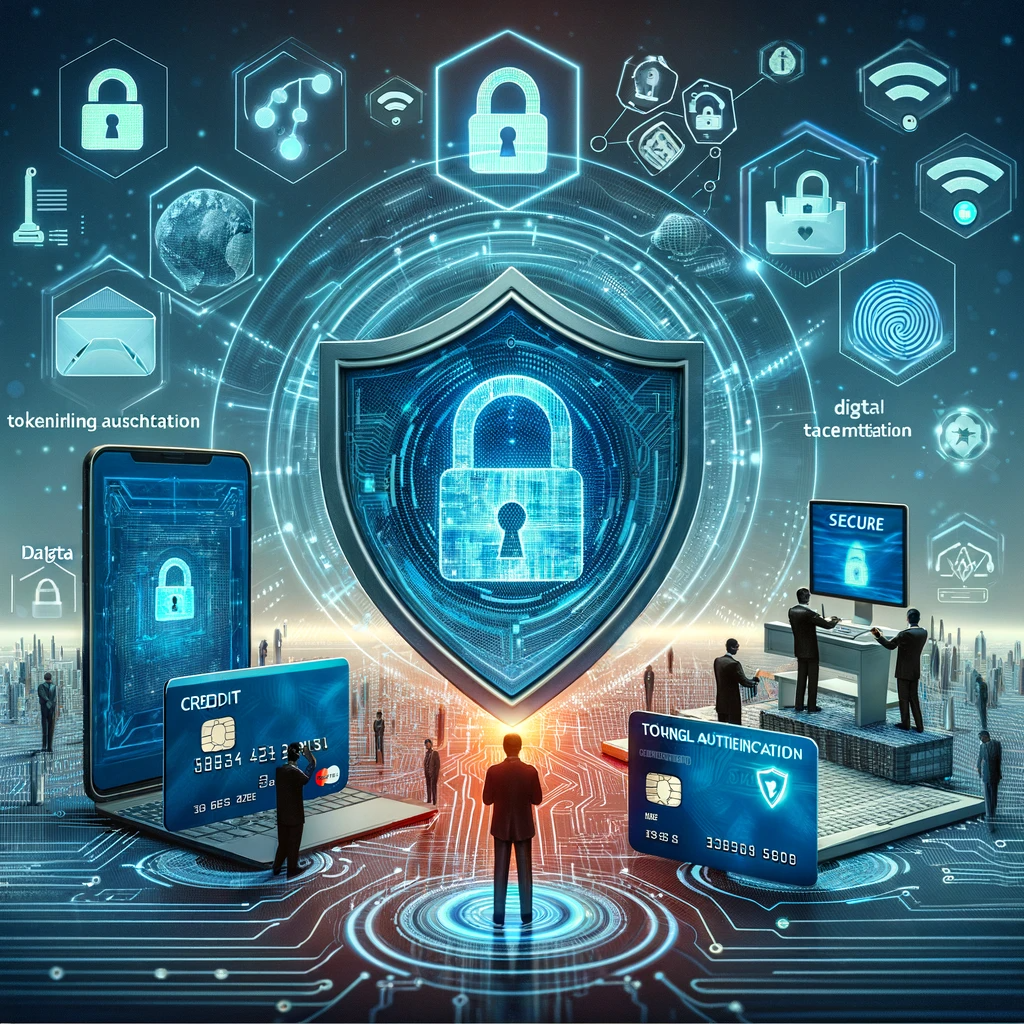10 months ago
How to Ensure that your Transactions are Secured?

Secure payment processor is crucial in the quick-paced digital world we live in. Protecting our personal and financial information has risen to the top of the priority list with the rise of online and mobile banking.
Understanding the dangers and repercussions associated with unsafe transactions is essential. Identity theft, phishing, and data breaches are all too prevalent cyberthreats that can have catastrophic implications on both our financial situation and our personal lives.
Choosing Secure Payment Methods
It's crucial to compare the security aspects of various payment methods in order to guarantee transaction security and secure online payment processing. Debit and credit cards, which were once the only accepted payment methods, now incorporate cutting-edge security features like CVV and OTP.
To safeguard user data, digital wallets, and online payment systems employ technology like tokenization and encryption.
When data is delivered over the internet, encryption changes it into an unreadable format to lower the risk of data theft. Tokenization goes a step further and substitutes distinctive identification symbols for sensitive data. As a result, even if the data is intercepted, it is meaningless without the particular "token."
Another key to ensuring safe transactions is the use of trusted payment gateways, which act as mediators between customers and their banks. Look for gateways that adhere to stringent security standards and use high-level encryption to safeguard customer information.
Implementing Two-Factor Authentication
Two-factor Authentication (2FA) is a highly effective internet secure payment gateway measure being utilized by many online platforms. It not only requires the usual login name and password but also a security verification’s second layer.
This second verification could be a unique code sent to your phone, identifying an image or even a fingerprint in the case of biometric verification.
Setting 2FA
Setting up 2FA on various accounts may differ slightly based on the platform. However, they all entail an extra step after entering your login details. It is a small inconvenience when weighed against the enhanced security it offers.
Biometric Authentication
Biometric authentication, an advanced form of 2FA, requires unique physiobiological traits like fingerprints and facial recognition for access. This is emerging as a tool in ensuring transaction safety, making it extremely difficult for someone other than the account holder to gain access.
Ensuring transaction security is a multi-faceted process. It involves choosing unassailable payment methods, leveraging advanced technologies like encryption and tokenization, and implementing rigorous authentication measures.
By doing so, we can enjoy the convenience of online banking and digital transactions with peace of mind.
Regular Monitoring and Alerts
Monitoring transactions regularly is paramount to detect any unauthorized activity. Today's sophisticated fraudsters are becoming exceedingly skilled at executing unauthorized transactions that, at face value, may appear legitimate. Regular monitoring helps with early detection, and timely prevention, and minimizes potential harm.
Utilizing transaction alerts and notifications from your banks and platforms serves as an excellent tool in your fight against fraud. These real-time updates keep you informed of any transactional activity, giving you the ability to swiftly identify and manage any inconsistencies.
In the event of any suspicious or unauthorized transactions, rapid response can make all the difference. Contacting your bank or service provider immediately allows them to take proper action, which may include freezing your account, reversing the transaction, or even alerting law enforcement.
Keeping Devices and Networks Safe
Given that most transactions are now performed on mobile devices or personal computers, ensuring the security of these devices is key. Updated software forms the first line of defense. Developers constantly refine their software to tackle the latest security threats, hence regular software updates are vital.
It's important to protect your devices from malware and phishing attacks. Invest in reputable security software and be wary of suspicious emails or messages that might be phishing attempts designed to steal your information.
Lastly, while Wi-Fi networks provide convenience, they can be a hotbed for cyber threats. Ensure secure connections when conducting transactions on public Wi-Fi networks. Use a VPN wherever possible to create a secure connection, reducing the risk of data breaches.
By implementing these secure payment provider strategies – choosing secure payment methods, observing two-factor authentication processes, regular transaction monitoring with prompt responses to anomalies, and keeping your devices and networks secure – you are well on your way to ensuring that your transactions are secured.
Commit to being proactive about your financial security in this digital age. The peace of mind that comes with knowing your financial transactions are protected is certainly worth it.
Educating Yourself About Scams: Online Transaction Safety Tips

Knowledge is power, and familiarizing yourself with the common online scams and fraud tactics is an important step toward securing your transactions.
Online scams can take various forms, including phishing scams, where cybercriminals impersonate legitimate entities to trick you into providing sensitive information. Cybercriminals have even been known to ransomware, encrypting your files and demanding payment to decrypt it.
Strategies to identify phishing emails and fake websites include examining the email for urgent tones, misspellings or poor grammar, and logos that don't look right. Delve deeper by hovering over links to check their destination, and in case of doubt, go directly to the company's official website. Always check the URL of websites to ensure they carry the 'https' prefix, indicating a secure connection.
When it comes to online sellers and platforms, avoiding scams becomes more challenging. However, you can verify their authenticity by researching the platform or seller before making a payment, checking for customer reviews, and preferably choosing platforms that offer secure payment methods and buyer protection policies.
Conclusion
Ensuring secure transactions requires a mix of informed choices, technological support, and constant vigilance.
From choosing secure payment methods, adopting 2FA and biometrics for strong authentication, to regular monitoring of transactions, safeguarding against scams, and securing your devices – each step contributes vital layers of protection in the online financial world.
The most crucial element, though, is a proactive approach. Don’t wait for a scam to happen – continually educate yourself, update your security measures, and stay alert. Secure transactions are at the core of digital convenience, so let's make every effort to maintain that peace of mind.
News
How are Cryptocurrency Hot Wallets Different from Cold Wallets
What is USDT — Tether coin meaning in cryptocurrency
How to Buy and Invest in Bitcoin
Cryptocurrency Security in 2024
Difference Between CEX and DEX in Crypto
What Is a Crypto Exchange
The Biggest Crypto Scams of All Time
Difference Between a Crypto Exchange And Broker
Accounting for Cryptocurrencies
Types of Cryptocurrency Wallets
Stay informed about the latest news on crypto
Subscribe to our newsletter.








